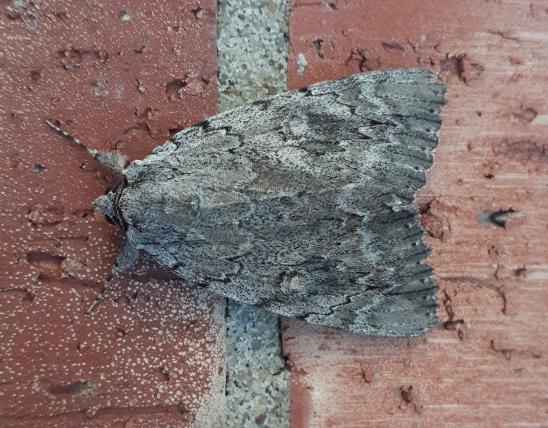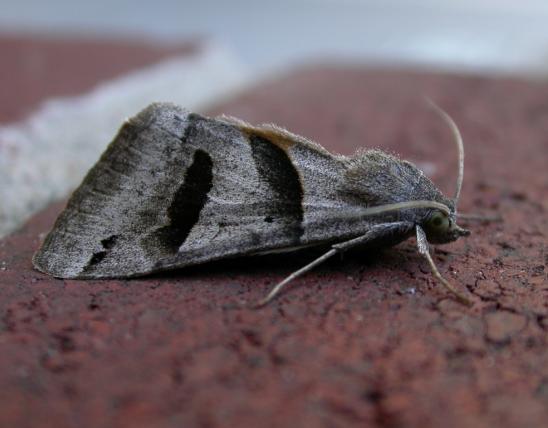
Adult clover loopers have distinctive tan mottled markings with brown bands. They typically fold their wings down their backs.
This species is distinguished from the very similar forage looper (C. erechtea) by the positioning of the two brown bands that appear on each of the forewings: In the clover looper, these bands nearly touch each other, and the band closest to the body extends to the inner edge of the forewing. In the forage looper, the two brown bands are clearly separate, and the band closest to the body doesn’t touch the inner edge of the wing. Also, the clover looper is usually more brownish, and the forage looper is more grayish.
Larvae are slender tan “loopers” (“inchworms”) with many thin, fine stripes down the length of the body, including the eyes.
Similar species: the caterpillars of many types of moths are called "loopers" because of their "inchworm" way of walking. Members of the geometrid family are usually called loopers for this reason, but that is a different family from the erebids, to which this species belongs.
Wingspan: 1–1½ inches.

Statewide.
Habitat and Conservation
Found in old fields, pastures, and other agricultural areas, and along roadsides and in disturbed places. The adults fly during both day and night. At night, they are attracted to lights.
Food
The caterpillars feed on clover and other members of the bean family, as well as grasses, and they are sometimes destructive to crops.
Status
Abundant resident.
Life Cycle
Adults fly from March into November, with several generations a year.
Human Connections
Clover loopers and forage loopers can both be pests on alfalfa and other legumes.
Ecosystem Connections
The caterpillars are herbivores that graze on vegetation. All stages — from egg, to caterpillar, to pupa, to adult — provide food for predators. Thus they convert the nutrients of clovers into their bodies — a form that birds and other predators can catch and consume.



































